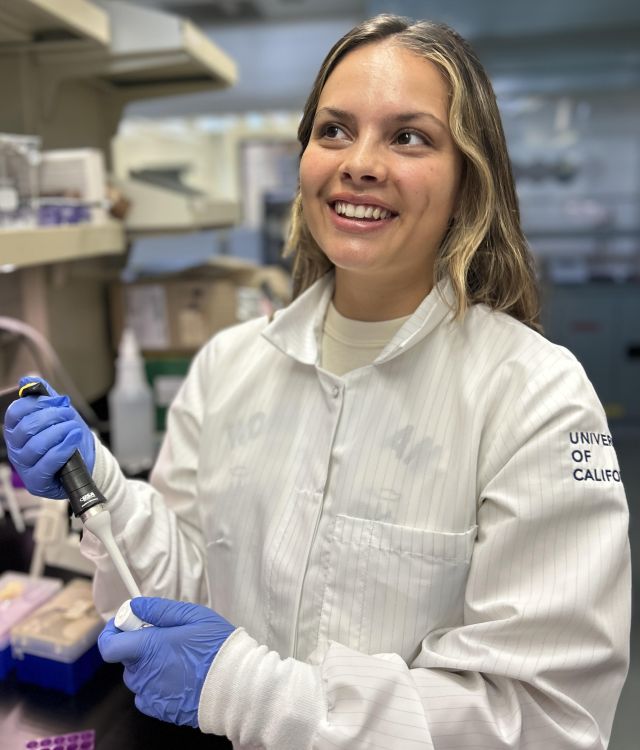
Student Spotlight: Surenna Pecchia
About me:
Surenna Pecchia is a 5th year Ph.D. student in Max Wilson’s lab at UC Santa Barbara. She is from Chelmsford, Massachusetts and received her B.S. in Biology from UMass Lowell.
What I’m studying:
The Wnt pathway converges at the β-catenin destruction complex (DC), a biomolecular condensate that regulates cellular β-catenin levels and consequently, cell fate decisions. Biomolecular condensates, also known as membrane-less organelles, are assemblies of proteins, RNAs, and other molecules that form liquid-like droplets within cells. These droplets are akin to oil in water. The textbook model of Wnt signaling states that the DC is a solid-state conglomerate, but the past decade of Wnt research has challenged this idea. With this updated structural framework in mind, my research focuses on understanding how the liquid-like properties of the DC regulate Wnt signaling. Over the course of my Ph.D, I utilized biotin proximity labeling (BioID) to obtain a list of protein-protein interactions between the DC and proteins within the cell. Presently, I am working on validating highly enriched DC-interacting proteins through CRISPR knock-downs. These experiments will allow me to understand the role of DC-interacting proteins in regulating DC structure and/or cellular β-catenin levels. Uncovering novel regulators of the Wnt pathway will allow us to explore new avenues of targeting the Wnt pathway in disease. Importantly, truncations in the DC scaffolding protein APC are highly prevalent in colorectal carcinoma, yet treatment options are limited. In the future, I hope to use BioID to understand how these cancer-causing mutations may alter the structure of the DC, resulting in an oncogenic phenotype.
Why choose UCSB:
The research culture at UCSB is extremely friendly, generous, and collaborative. It was important to me to choose a research university where I would feel supported by both faculty and my peers while working towards my Ph.D. and UCSB fits the bill. I’ve found that everyone I’ve met here is more than willing to lend a helping hand, consult on one another's projects, and share new techniques.
Department:
I really appreciate that MCDB values collaborative research. So many labs in our department work with one another, which fosters an enriching and non-competitive environment. The department also does a great job of keeping its graduate students on track to complete our degrees by implementing a clear schedule for coursework, the qualifying exam, and meeting with our thesis committee.
Santa Barbara:
There’s no better place to work on your Ph.D. than in Santa Barbara. The first time I visited, I was immediately blown away by how beautiful Santa Barbara is sandwiched between the ocean and the mountains. The weather is mild and sunny year-round. The beach is easily accessible on campus and makes a great place to go for breaks during the work day. Downtown Santa Barbara is beautiful, as well. It’s just a short drive away from campus, and is a great spot for shopping, restaurants, and countless wine-tasting rooms. What I love the most about Santa Barbara is that it has quiet, small-town energy while still having so many fun things to do.